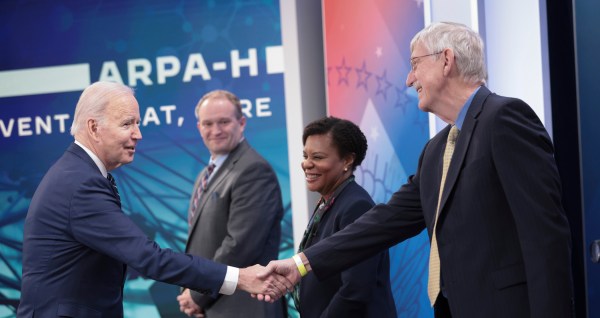Patil: Digital health data can be ‘super power’
The goal of ubiquitous electronic medical records and digital health data isn’t to eliminate doctors or replace them with computers, the White House’s chief data scientist said Thursday, but rather to give patients and their physicians “super powers” to make better decisions about health care.
DJ Patil said the aim should be to make doctors and caregivers so much better at what they do that without it, they feel like Superman around Kryptonite.
Patil, the nation’s first chief data scientist, suggested that a major reason health data hasn’t achieved the prevalence digital data have in other areas — like education or urban development — is because of the popular fallacies surrounding artificial intelligence and machine learning.
“We hear these provocative statements — ‘Oh yes, the computer is going to replace the doctor,’” he said sarcastically.
“It’s not about replacing people,” said Patil, speaking at the ONC Consumer Health IT Summit about the power of data and why the availability of electronic health records tend to lag behind. “It’s augmenting. You should only be focused on how you make people smarter, faster, and more effective. How do you do that? You focus on building a super power.”
Patil argued that the smartphone has become the universal example of such a modern super power.
“Ever lose your phone?” he asked the audience. “What’s that feeling like? ‘Oh my God. Did I back it up?’ What is that feeling? That feeling is what happens to a super hero when they lose their super power. That’s what happens. It’s Kryptonite. All data products, you must feel crippled [without them] if you have built the product the right way.”
For digital health data, Patil said that’s what the industry has to aim for. “We have to focus on building that super power,” he said.
Speakers during later panels implied that the Blue Button initiative — a health IT movement sparked in recent years to let patients download their health records online — embodies the closest the health care industry has gotten so far to attaining that super power-like quality.
“The vision is that people will take this simple text and then be able to direct” their health data to physicians, said Susannah Fox, chief technology officer of the Department of Health and Human Services.
This is particularly significant for veterans when they end their service and must transfer their health information to the civilian world, said Col. John Scott, a clinical informatics specialist with the Department of Defense.
“We’re now directing the patient to look at his problem list as part of preparing for his separation,” Scott said. “He can download that problem list from Blue Button on a PDF or he can put it on a [continuity of care document]. We hope in the future he can automatically populate his [Department of Veterans Affairs] health record through MyHealtheVet.”
“It’s kind of like taking a selfie,” Fox said. “What we now have: a separating service member has essentially just a snapshot of what they’re dealing with so they can go into the next clinical encounter with that knowledge.” The same is applicable for Medicare beneficiaries she said, especially those who move around during the changing seasons.
And Niall Brennan, chief data officer of the Centers for Medicare and Medicaid Services, said he hopes to further use the Blue Button initiative to make that experience even better for Medicare and Medicaid beneficiaries very soon.
“I want the right data [sent] to the right people at the right time in a format where they can maximize and use that data and sort of again … fall in love with the data and fall in love with the user experience,” Brennan said. “And hopefully at the end of that process we will have a Medicare Blue Button that is significantly more consumer friendly, creates significantly less friction, and creates significantly more opportunities for beneficiaries to optimize the data either themselves or in partnership with a trusted third-party apps or providers.”
Ryan Panchadsaram, deputy CTO in the White House, played off of Patil’s analogy of the smartphone as a super power to relate how far Blue Button has come in the last five years.
“Sure we in some ways haven’t made the iPhone leap, but we’ve done more in a different way,” Panchadsaram said. “The iPhone had so many foundational pieces to build on top of, we really took a world from paper and made it go digital. And now we’re catching up and it’s really going to take each of us to do that.”






